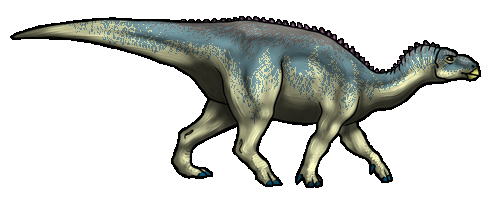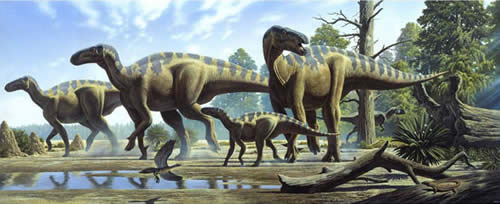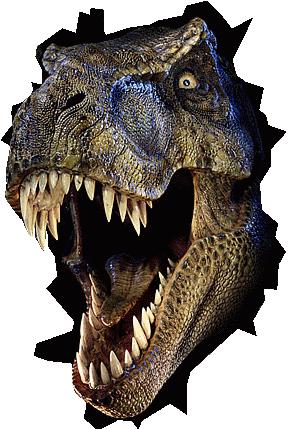Post by Delirious on Mar 18, 2015 18:13:46 GMT 2
Iguanodon

©2015 DeliriouStudios
Name Meaning: Iguana Tooth
Diet: Herbivore
Size: Same hight at Triceratops.
Time: Mid Jurrasic (180 - 159 million years ago)

Appearance
Iguanodon is a genus of ornithopod dinosaur that existed roughly halfway between the first of the swift bipedal hypsilophodontids of the mid-Jurassic and the duck-billed dinosaurs of the late Cretaceous. Iguanodon were bulky herbivores that could shift from bipedality to quadrupedality (four legged and two legged). Distinctive features include large thumb spikes, which were possibly used for defence against predators, combined with long prehensile fifth fingers able to forage for food. It's estimated to have weighed about 3 tonnes (3.5 tons) on average, and measured about 10 metres long (33 ft) as an adult, with some specimens possibly as long as 13 metres (43 ft). These animals had large, tall but narrow skulls, with toothless beaks probably covered with keratin, and teeth like those of iguanas, but much larger and more closely packed. The legs were powerful, but not built for running, and each foot had three toes. The backbone and tail were supported and stiffened by ossified tendons, which were tendons that turned to bone during life. Iguanodon was that it had the teeth of a herbivorous reptile, although there has not always been consensus on how it ate.

Behaviour
The thumb spike is one of the best-known features of Iguanodon. This thumb is typically interpreted as a close-quarter stiletto-like weapon against predators, although it could also have been used to break into seeds and fruits, or against other Iguanodon. Iguanodon's tail was probably used in defence as well, with enough force it is possible the tail could break the neck of an opposing threat. They where herding animals that would stay in large groups of 20 to 30 individuals possibly with a hierarchy of a few top alphas. Though Iguanodon did not have large spikes or armoured plates showed that they where strong enough to some how live without such large defence meaning that there really is safety in numbers.

Disney's Dinosaur Aladar
The Iguanodon was made popular by Disney's 2000 film called Dinosaur. The film opens with an Iguanodon mother being forced to abandon her nest during a Carnotaurus attack. The one surviving egg ends up on a journey via several predicaments before it ends up on an island populated by lemurs. The Dinosaur is called Aladar and later saves a heard of Iguanodon and other dinosaurs and leads them to the nesting grounds. Disney's interpretation of the species of dinosaur featured where rather accurate with the discovery's at the time, though Iguanodon did not have lips.

Have any questions or things to add? please comment below!


